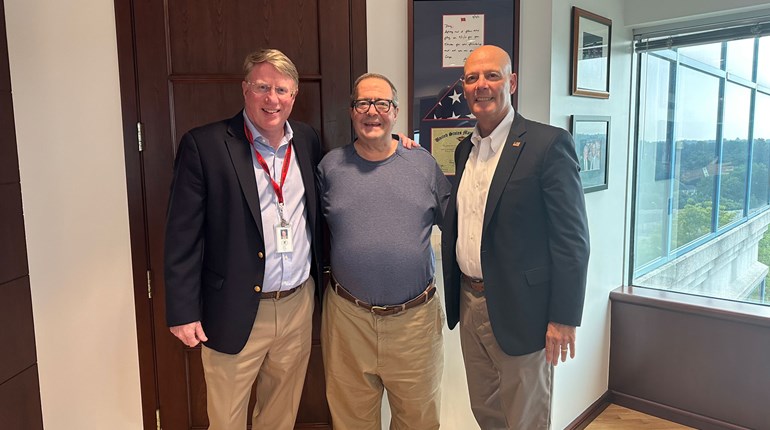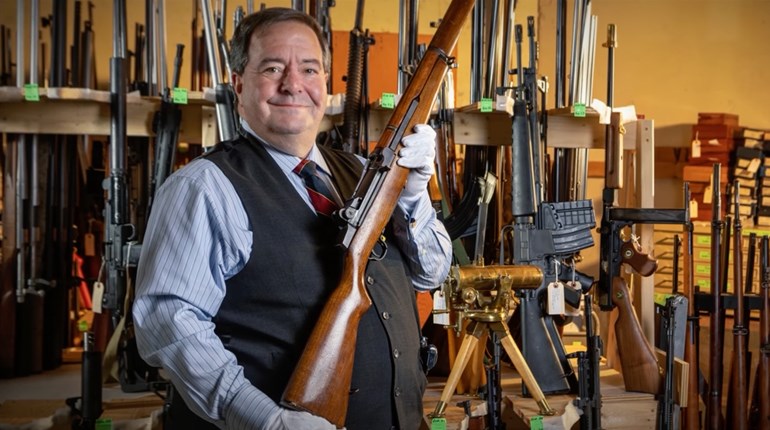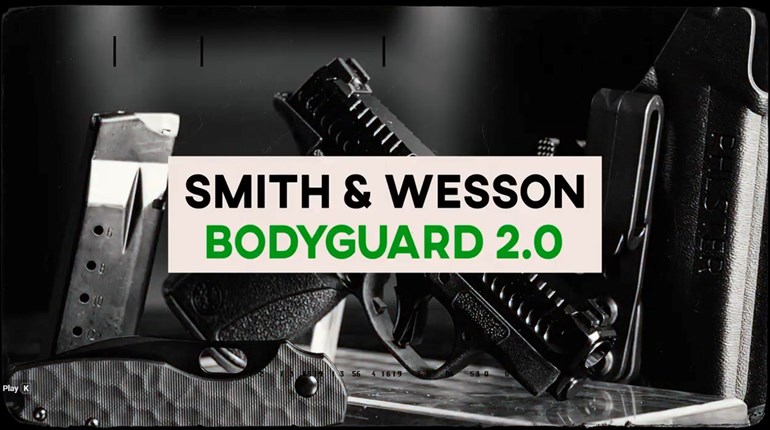
 How many articles about the Walther PPK have started out with, “Bond, James Bond,” and then delved into the film history of Ian Fleming’s greatest secret agent? Just about every article that I’ve read since “Dr. No” hit the theaters in 1962 has had at least some passing reference to MI6’s 007 and his PPK. Somewhere in all the missives about 007, M, Q and the host of firearms used in the Bond canon of films, the actual history of the Walther pistol is either glossed over, or, in many cases, just confused.
How many articles about the Walther PPK have started out with, “Bond, James Bond,” and then delved into the film history of Ian Fleming’s greatest secret agent? Just about every article that I’ve read since “Dr. No” hit the theaters in 1962 has had at least some passing reference to MI6’s 007 and his PPK. Somewhere in all the missives about 007, M, Q and the host of firearms used in the Bond canon of films, the actual history of the Walther pistol is either glossed over, or, in many cases, just confused.
The story begins with Carl Wilhelm Freund Walther (1858-1915), who was born in Zella-Mehlis, Thuringia, Germany. Located in the center of the country, Thuringia had been an arms-producing region since the early 1500s, and included the arms centers of Suhl and Erfurt.
Carl Walther was the grandson of arms producers and married the daughter of a revolver manufacturer in 1888. Having taken up the trade himself as an apprentice and then journeyman making Mauser rifles, he established his own factory at his home in 1886. He fathered five sons. The oldest, Fritz, would convince his father to switch from sporting-rifle manufacture to self-loading pistols in 1908.
Beginning with the Walther Model 1 that year, Walther produced very reliable semi-automatics in .25 ACP and .32 ACP. The company produced locks for Maxim machine guns during World War I, and resumed civilian pistol production during the Weimar Republic era. In 1929, it introduced the Model PP in .32 ACP. The PP in the model designation stood for Polizei Pistole, or police pistol. In 1931 a smaller-framed pistol named the PPK, Polizei Pistole Kriminal, was introduced, chambered in .380 ACP. The naming difference was to differentiate the two guns from standard-police issue to police-detective issue—kriminal in German roughly equates to “detective” in English—similar to the distinction Colt made between the Police Positive and Detective Special in its revolver lines of the same time period.
Both pistols became wildly popular in the 1930s and found widespread use among the various branches of the German military and police forces up to and throughout the Second World War.
In early April, 1945, American forces were the first to occupy the Walther factory at Zella-Mehlis and “liberated” nearly everything that had a trigger attached to it. Some would later recount that the Americans stole everything in the factory, but the Soviet Union—which occupied the city in July of 1945—stole the whole factory. Shortly after, every factory machine and tool that could be moved by train headed east, and the Soviets razed the entire 5-acre Walther compound, ending Walther’s 65-year presence in the town.

Eventually, Walther was able to resume production in the West German city of Ulm and subsequent production bears the Ulm rollmark on the slide.
According to the venerable “Internet Movie Firearms Database,” the first time we see a Walther PP in a film is Alfred Hitchcock’s 1938 thriller, “The Lady Vanishes.” Actor Paul Lukas uses the pistol in the climactic shootout scene with Michael Redgrave et al. It was an interesting choice, as the film was shot entirely in England, Lukas’ PP would have been relatively obscure to English shooters at the time.
The most memorable use of a PP in film would come 24 years later in the hands of Sean Connery portraying Ian Fleming’s secret agent super-hero, James Bond, in “Dr. No.” In this, the first of the Bond feature films, the scene where the PP/PPK makes its first appearance went something like this:
M: Take off your jacket. Give me your gun. Yes, I thought so. This damn Beretta again. I’ve told you about this before. You tell him—for the last time.
Major Boothroyd: Nice and light—in a lady’s handbag. No stopping power.
M: Any comments, 007?
Bond: I disagree, sir. I’ve used a Beretta for 10 years. I’ve never missed with it yet.
M: Maybe not, but it jammed on your last job and you spent 6 months in hospital. A double-O number means you’re licensed to kill, not get killed. And another thing. Since I’ve been head of MI6, there’s been a 40-percent drop in double-O casualties. I want it to stay that way. You’ll carry the Walther. Unless you’d prefer to go back to standard intelligence duties?
Bond: No, sir. I would not.
M: Then from now on you carry a different gun. Show him, armourer.
Major Boothroyd: Walther PPK. 7.65 mm with a delivery like a brick through a plate-glass window. Takes a Brausch silencer with little reduction in muzzle velocity. The American CIA swear by them.
M: Thank you, Major Boothroyd. Any questions, 007?
Bond fans will notice that in this first film, M refers to the “armourer” as Major Boothroyd, a tip of the cap to Geoffrey Boothroyd, who provided Fleming with technical advice on Bond’s firearms after reading the novels and suggesting the use of the PPK. “Dr. No” was Fleming’s sixth Bond novel, published in 1958, but the first of the novels to be made into a motion picture, so the Beretta (a Model 418 .25 ACP in the books and a Model 34 .32 ACP in the film) was retired early on, and the PPK made the cast for the rest of the Bond franchise.
But wait … there’s more.
According to actor Bernard Lee, who played M in the first 11 Bond films, he provided his personal PPK for the scene where Bond receives his new gun as the desired prop pistol wasn’t available at the time. For the rest of the film, a PP was used as a PPK stand-in. And if that wasn’t confusing enough, the official publicity posters for the next 007 film, “From Russia with Love,” show Bond holding a Walther LP 53 air pistol that never appears in any of the films, but was the only pistol available when the photographer took the publicity stills for the press campaign. It sold at Christies for more than $400,000 in 2010.




































